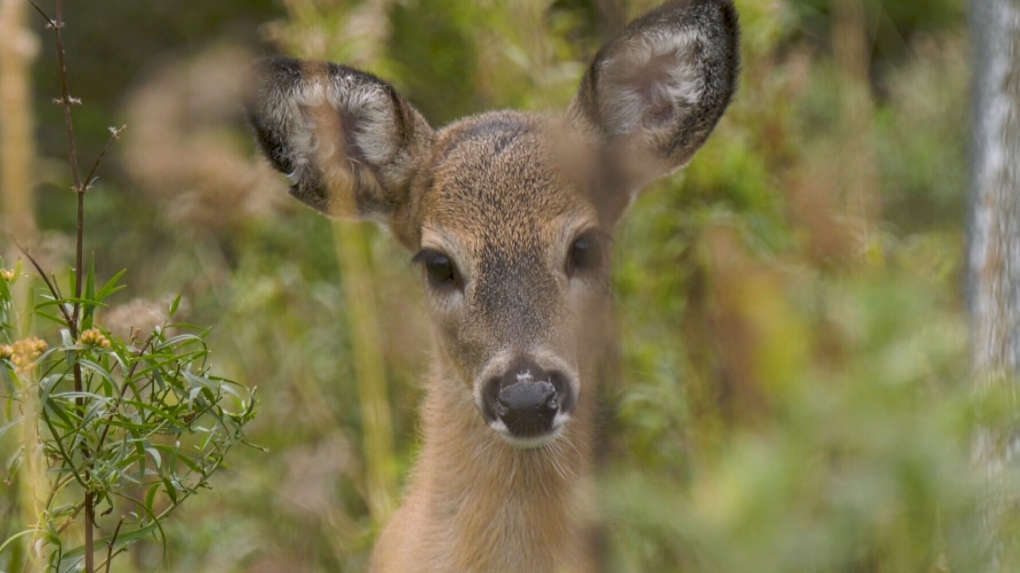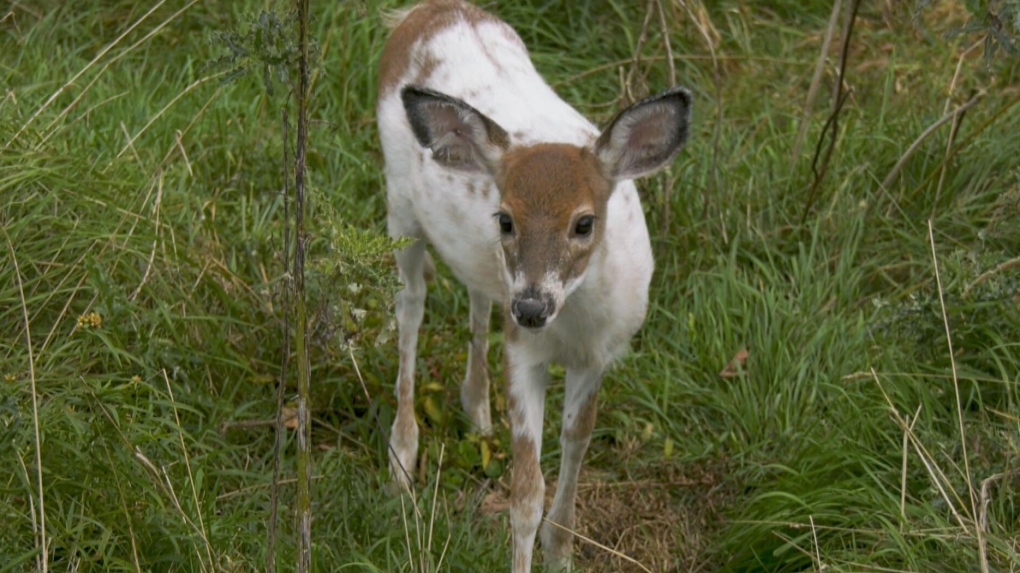Nova Scotia's Hope for Wildlife prepares to release rehabilitated deer back into the wild
An animal rehabilitation centre in Seaforth, N.S., is preparing to release deer that have been under their care for months now back into the wild.
Hope Swinimer, founder of Hope for Wildlife, says a group of fawn arrived at the centre in the spring and summer.
"They were mostly hit by cars themselves or their mother was hit and killed and that's why they're here," said Swinimer.
"We really hope to get them out in the middle of October. That gives them a good chunk of time to get familiar… there's still an abundant food supply for them during this time. So, it is a good release time for the deer."
Swinimer says the fawns are raised to be very wild in hopes it will make their transition back into their natural environment easier.
 A deer at Hope for Wildlife in Seaforth, N.S., is pictured.
A deer at Hope for Wildlife in Seaforth, N.S., is pictured.
In total, Hope for Wildlife has 11 deer they plan to release soon.
"We have a piebald deer here, and that's a deer that has a lot of white in it. It's a recessive gene that they carry, so it does happen naturally in our wild world," Swinimer explained. "It's quite rare, although we usually see one every year or so and we're very happy that this deer has become part of the herd and is very healthy and strong and will do just fine in the wild."
 A piebald deer is pictured.
A piebald deer is pictured.
When deer are supplied food, Swinimer says they can become very dependent on humans – a situation that tends to end badly for the animal.
"They become very comfortable walking across the road to access that food source, so anything we can do to prevent that interaction between humans and wildlife is a good thing."
'Active at dawn and dusk'
Swinimer reminds the public to be cautious from October to December, noting it’s a very active time for deer.
"We get more reported cases of deer hit by cars during that time period," said Swinimer. "Deer are very active at dawn and dusk. So, it's incredibly important, since you'll be driving more in the dark hours, to really slow down and watch for deer along the side of the road."
 A road sign warning of deer crossings is pictured.
A road sign warning of deer crossings is pictured.
Swinimer says when you see one deer, there are likely more nearby.
For more Nova Scotia news, visit our dedicated provincial page.
CTVNews.ca Top Stories

Poilievre suggests Trudeau is too weak to engage with Trump, Ford won't go there
While federal Conservative Leader Pierre Poilievre has taken aim at Prime Minister Justin Trudeau this week, calling him too 'weak' to engage with U.S. president-elect Donald Trump, Ontario Premier Doug Ford declined to echo the characterization in an exclusive Canadian broadcast interview set to air this Sunday on CTV's Question Period.
Man who died trying to help stranded motorist identified as Khalid Farooq, father of 5
The man who lost his life trying to help a stranded motorist Wednesday has been identified as Khalid Farooq.
W5 Investigates 'I never took part in beheadings': Canadian ISIS sniper has warning about future of terror group
An admitted Canadian ISIS sniper held in one of northeast Syria’s highest-security prisons has issued a stark warning about the potential resurgence of the terror group.
Trudeau talks border, trade in surprise dinner with Trump at Mar-a-Lago
Prime Minister Justin Trudeau discussed border security and trade during a surprise dinner with U.S.-president elect Donald Trump at Mar-a-Lago in West Palm Beach, Fla. on Friday evening, according to senior government sources.
Montreal researchers make breakthrough discovery in fighting HIV
Researchers in Montreal have made a breakthrough discovery in HIV research by finding a way to expel the virus from its hiding places and destroy it.
Are scented candles bad for you? What the science says
Concerns about the safety of candles are rooted in the chemical reactions that occur when you burn them, as well as in the artificial fragrances and colorants that contribute to the various scents you may love.
Man wanted after allegedly hitting vehicle repeatedly with hatchet near Toronto courthouse
Police are searching for a man who allegedly hit a car with a hatchet multiple times while yelling at the driver near a courthouse in downtown Toronto earlier this week.
'Very alarming:' Online scams spike during the holidays
Shoppers are out looking for the best deals on gifts for their loved ones. However, the RCMP and the Better Business Bureau are warning people that the deals they’re seeing online might be too good to be true.
Trump and Republicans in Congress eye an ambitious 100-day agenda, starting with tax cuts
Republicans are planning an ambitious 100-day agenda with U.S. president-elect Donald Trump in the White House and GOP lawmakers in a congressional majority to accomplish their policy goals.

































